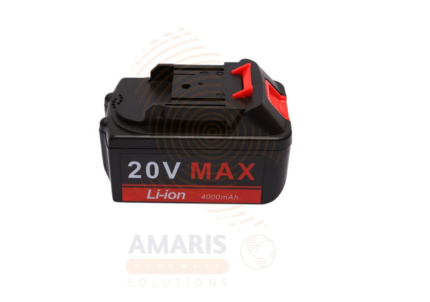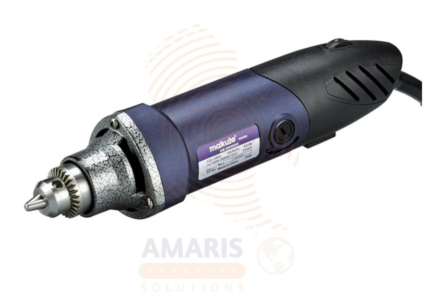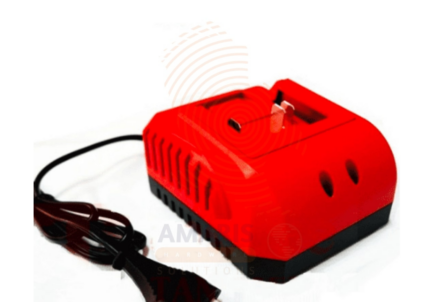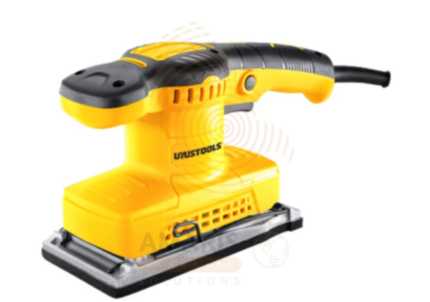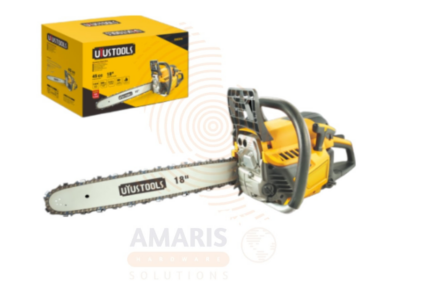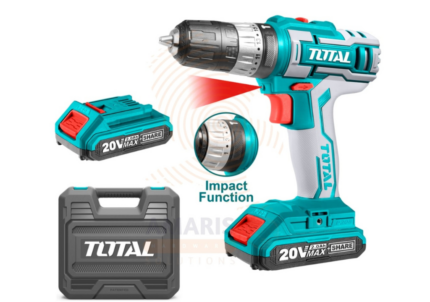

Lithium Ion Cordless Drill
$43.46 Original price was: $43.46.$41.29Current price is: $41.29.
A Lithium Ion Cordless Drill is a portable power tool that utilizes lithium-ion rechargeable battery technology as its primary power source. This type of drill is designed for versatility and convenience, allowing users to perform drilling and driving tasks without being tethered to a power outlet. The lithium-ion batteries provide a high energy density, longer runtime, and faster charging capabilities compared to traditional rechargeable batteries, making these cordless drills popular choices for both professional and DIY (do-it-yourself) applications. They typically feature adjustable torque settings, variable speed controls, and a compact, lightweight design for ease of use in various construction, woodworking, or home improvement projects.
Table of Contents
ToggleLithium Ion Cordless Drill
Uses
-
Woodworking: Cordless drills are commonly used in woodworking projects for tasks such as drilling pilot holes, driving screws, and assembling furniture.
-
Home Improvement: These drills are indispensable for home improvement projects, including tasks like hanging shelves, installing curtain rods, and mounting fixtures.
-
Construction: Professionals in the construction industry use cordless drills for a multitude of applications, from framing and installing drywall to electrical work and plumbing.
-
DIY Projects: Lithium-ion cordless drills are popular among DIY enthusiasts for a wide range of projects, including building small structures, crafting, and repairing household items.
-
Automotive Repair: Cordless drills with appropriate attachments can be used for automotive repair tasks, such as removing and installing bolts and screws in various parts of a vehicle.
-
Metalworking: Cordless drills equipped with the right drill bits can be used for drilling holes in metal, making them valuable in metalworking projects and repairs.
-
Gardening: For assembling and repairing garden structures, building raised beds, or securing fencing, a cordless drill can be a handy tool.
-
Installation Work: Whether installing cabinets, doors, or windows, a cordless drill is essential for drilling holes and driving screws in tight spaces.
-
Emergency Repairs: The portability of cordless drills makes them convenient for emergency repairs around the house or on the go, such as fixing a broken latch or securing loose hinges.
-
General Maintenance: Homeowners and professionals alike use cordless drills for routine maintenance tasks, such as tightening hardware, replacing fixtures, and addressing minor repairs.
-
Electrical Work: Electricians use cordless drills for tasks like drilling holes for wiring, installing electrical boxes, and other electrical installations.
Safety Precautions
-
Read the Manual:
-
Familiarize yourself with the user manual that comes with the cordless drill. It contains important information about the tool's specifications, proper usage, and safety guidelines.
-
-
Personal Protective Equipment (PPE):
-
Wear appropriate PPE, including safety glasses or goggles to protect your eyes from debris, and hearing protection if the drill is loud.
-
-
Clothing and Jewelry:
-
Avoid loose clothing and tie back long hair to prevent entanglement in the drill. Remove jewelry, especially rings and bracelets, which could get caught in moving parts.
-
-
Secure Workpiece:
-
Secure the workpiece properly using clamps or other appropriate methods. A stable workpiece reduces the risk of the drill slipping or causing unexpected movements.
-
-
Inspect the Drill:
-
Before use, inspect the cordless drill for any damage, loose parts, or malfunction. Ensure that all handles, grips, and safety features are in good working condition.
-
-
Charge the Battery Safely:
-
Follow the manufacturer's instructions for charging the lithium-ion battery. Use only the provided charger or one recommended by the manufacturer. Avoid overcharging, and store batteries in a cool, dry place.
-
-
Use the Right Drill Bit:
-
Ensure that you use the appropriate drill bit for the material you are working on. Using the wrong bit can lead to overheating, kickback, or other safety hazards.
-
-
Adjust Clutch Settings:
-
Adjust the clutch settings on the drill to match the torque required for the task. This helps prevent the drill from over-torqueing and reduces the risk of injury.
-
-
Secure Grip:
-
Maintain a firm and secure grip on the drill at all times. Ensure your hands are away from the drilling or driving area to avoid accidental contact with the rotating parts.
-
-
Work in a Well-Lit Area:
-
Adequate lighting helps you see your work clearly, reducing the risk of accidents. Avoid working in dimly lit or poorly illuminated areas.
-
-
Switch Off Before Adjusting:
-
Always switch off the drill and disconnect the battery before making adjustments, changing drill bits, or performing maintenance. This prevents accidental starts.
-
-
Stay Focused:
-
Avoid distractions while operating the cordless drill. Stay focused on the task at hand to minimize the risk of accidents.
-
-
Store Safely:
-
When not in use, store the cordless drill and batteries in a secure location, away from heat sources, moisture, and direct sunlight.
-
-
Emergency Preparedness:
-
Be aware of the location of emergency shut-off switches, first aid kits, and fire extinguishers in your work area. Know how to use them in case of an emergency.
-


 Acrylic Sealants
Acrylic Sealants Construction Adhesives
Construction Adhesives Double-Sided Tape
Double-Sided Tape Duct Tape
Duct Tape Electrical Tape
Electrical Tape Epoxy & Resins
Epoxy & Resins Masking Tape
Masking Tape
 Automotive Wrenches & Socket Sets
Automotive Wrenches & Socket Sets Battery Chargers & Jump Starters
Battery Chargers & Jump Starters Car Jacks & Stands
Car Jacks & Stands Car Wash & Detailing Products
Car Wash & Detailing Products Diagnostic Tools
Diagnostic Tools Tire Inflators
Tire Inflators Vehicle Lighting
Vehicle Lighting Oil & Lubricants
Oil & Lubricants
 Adhesives & Sealants
Adhesives & Sealants Bricks & Blocks
Bricks & Blocks Cement & Concrete
Cement & Concrete Drywall & Plaster
Drywall & Plaster Flooring (Tiles, Wood, Laminate)
Flooring (Tiles, Wood, Laminate) Lumber & Plywood
Lumber & Plywood Paints, Primers & Coatings
Paints, Primers & Coatings Insulation Materials
Insulation Materials Roofing Materials
Roofing Materials
 Circuit Breakers
Circuit Breakers Electrical Cables & Wires
Electrical Cables & Wires Switches & Sockets
Switches & Sockets Fuses & Relays
Fuses & Relays Connectors & Terminals
Connectors & Terminals Electrical Boxes & Panels
Electrical Boxes & Panels Conduit & Fittings
Conduit & Fittings Lighting Fixtures & Bulbs
Lighting Fixtures & Bulbs Extension Cords & Power Strips
Extension Cords & Power Strips
 Anchors
Anchors Bolts
Bolts Clips & Clamps
Clips & Clamps Screws
Screws Nuts
Nuts Washers
Washers Rivets
Rivets Nails
Nails Threaded Rods
Threaded Rods
 Hammers
Hammers Measuring Tools (Tapes, Levels, Calipers)
Measuring Tools (Tapes, Levels, Calipers) Screwdrivers
Screwdrivers Pliers & Cutters
Pliers & Cutters Saws & Blades
Saws & Blades Chisels & Punches
Chisels & Punches Allen Keys & Hex Keys
Allen Keys & Hex Keys Ratchets & Socket Sets
Ratchets & Socket Sets Wrenches & Spanners
Wrenches & Spanners
 Power Tool Accessories (Blades, Bits, Discs)
Power Tool Accessories (Blades, Bits, Discs) Rotary Tools
Rotary Tools Saws (Circular, Jigsaw, Reciprocating)
Saws (Circular, Jigsaw, Reciprocating) Drills & Drivers
Drills & Drivers Grinders & Sanders
Grinders & Sanders Heat Guns
Heat Guns Nail Guns
Nail Guns Impact Wrenches
Impact Wrenches Batteries & Chargers
Batteries & Chargers
 Pipes & Fittings (PVC, Copper, PEX)
Pipes & Fittings (PVC, Copper, PEX) Plumbing Tools
Plumbing Tools Pumps & Motors
Pumps & Motors Sealants & Adhesives for Plumbing
Sealants & Adhesives for Plumbing Valves & Taps
Valves & Taps Water Heaters
Water Heaters Drainage Systems
Drainage Systems Faucets & Fixtures
Faucets & Fixtures Hoses & Tubing
Hoses & Tubing
 Hinges & Latches
Hinges & Latches Hooks & Brackets
Hooks & Brackets Window Hardware
Window Hardware Chains & Cables
Chains & Cables Casters & Wheels
Casters & Wheels Shelving & Storage Systems
Shelving & Storage Systems Door Handles & Locks
Door Handles & Locks Drawer Slides & Cabinet Hardware
Drawer Slides & Cabinet Hardware
 Personal Protective Equipment (PPE)
Personal Protective Equipment (PPE) Respirators & Masks
Respirators & Masks Safety Glasses
Safety Glasses Safes
Safes Security Cameras
Security Cameras Gloves
Gloves Helmets
Helmets Ear Protection
Ear Protection Fire Safety Equipment
Fire Safety Equipment Locks & Padlocks
Locks & Padlocks Motion Sensors & Alarms
Motion Sensors & Alarms
 Garden Fencing
Garden Fencing Garden Furniture Hardware
Garden Furniture Hardware Lawn Mowers
Lawn Mowers Trimmers & Edgers
Trimmers & Edgers Shovels & Spades
Shovels & Spades Rakes & Hoes
Rakes & Hoes Pruning Shears & Loppers
Pruning Shears & Loppers Watering Systems (Hoses, Sprinklers, Nozzles)
Watering Systems (Hoses, Sprinklers, Nozzles)
 Interior Paints
Interior Paints Paint Brushes & Rollers
Paint Brushes & Rollers Paint Strippers & Thinners
Paint Strippers & Thinners Paint Trays & Accessories
Paint Trays & Accessories Exterior Paints
Exterior Paints Spray Paints
Spray Paints Primers & Undercoats
Primers & Undercoats Varnishes & Stains
Varnishes & Stains
 Gaskets & Seals
Gaskets & Seals Hydraulic Fittings
Hydraulic Fittings Industrial Fasteners
Industrial Fasteners Industrial Hoses
Industrial Hoses Lubricants & Greases
Lubricants & Greases Metal Sheets & Bars
Metal Sheets & Bars Bearings & Bushings
Bearings & Bushings Belts & Pulleys
Belts & Pulleys
 HVAC Filters
HVAC Filters Insulation for HVAC
Insulation for HVAC Air Conditioners
Air Conditioners Refrigerants
Refrigerants Ventilation Ducts & Fittings
Ventilation Ducts & Fittings Thermostats & Controllers
Thermostats & Controllers Fans & Blowers
Fans & Blowers
 Pegboards & Hooks
Pegboards & Hooks Shelving Units
Shelving Units Storage Bins & Containers
Storage Bins & Containers Toolboxes & Tool Chests
Toolboxes & Tool Chests Workbenches
Workbenches Drawer Organizers
Drawer Organizers Labeling Supplies
Labeling Supplies
 Welding Accessories (Clamps, Brushes)
Welding Accessories (Clamps, Brushes) Welding Electrodes & Rods
Welding Electrodes & Rods Welding Helmets & Gloves
Welding Helmets & Gloves Welding Machines
Welding Machines Soldering Irons & Stations
Soldering Irons & Stations Flux & Solder Wire
Flux & Solder Wire
 Generator Accessories
Generator Accessories Inverters
Inverters Portable Generators
Portable Generators Power Inverters
Power Inverters Transfer Switches
Transfer Switches Diesel & Gasoline Generators
Diesel & Gasoline Generators
 Transport Equipment: Carts, Dollies, and Hand Trucks
Transport Equipment: Carts, Dollies, and Hand Trucks Storage Solutions: Pallets, Racks, and Containers
Storage Solutions: Pallets, Racks, and Containers Lifting Equipment: Hoists, Cranes, and Jacks
Lifting Equipment: Hoists, Cranes, and Jacks Conveyors and Accessories: Belts and Rollers
Conveyors and Accessories: Belts and Rollers

